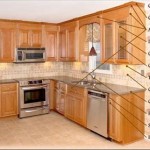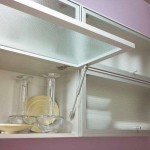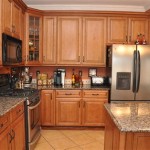Laminating Kitchen Cabinets: A Detailed Guide to Enhance Their Durability and Style
Laminating kitchen cabinets is a transformative process that involves applying a thin layer of laminate material to the surface of the cabinets. Laminate is a durable, versatile material that can enhance both the appearance and longevity of kitchen cabinetry. In this guide, we will delve into the essential aspects of laminating kitchen cabinets, including the types of laminates, the benefits of laminating, and the step-by-step process involved.
Types of Laminates
There are two main types of laminates used in kitchen cabinet applications: high-pressure laminate (HPL) and low-pressure laminate (LPL). HPL is a more durable and water-resistant option, making it suitable for high-traffic areas such as kitchens. LPL, on the other hand, is thinner and more flexible, allowing for easier application on curved or irregular surfaces.
Benefits of Laminating Kitchen Cabinets
Laminating kitchen cabinets offers numerous advantages, including:
- Enhanced Durability: Laminate is highly resistant to scratches, stains, and moisture, which helps protect cabinets from wear and tear.
- Improved Appearance: Laminates are available in a wide range of colors, patterns, and textures, providing endless possibilities for customizing the look of cabinets.
- Easy Maintenance: Laminate surfaces are non-porous, making them easy to clean and maintain. Spills and stains can be simply wiped away.
- Cost-Effective: Laminating cabinets is a relatively affordable option compared to replacing or repainting them.
Step-by-Step Process for Laminating Kitchen Cabinets
Laminating kitchen cabinets involves several steps:
- Prepare the Cabinets: Remove all hardware and clean the cabinet surfaces thoroughly to ensure proper adhesion.
- Apply Contact Cement: Spread a thin layer of contact cement to both the laminate sheet and the cabinet surface. Allow it to dry for the specified time.
- Laminate the Cabinets: Carefully align the laminate sheet with the cabinet surface and press down firmly to ensure good contact.
- Trim Excess Laminate: Use a utility knife to trim any excess laminate around the edges of the cabinets.
- Install Hardware: Reinstall the hardware to complete the project.
Tips for Success
To ensure successful results when laminating kitchen cabinets, consider the following tips:
- Use high-quality laminate and contact cement.
- Carefully prepare the cabinet surfaces.
- Allow ample drying time for the contact cement.
- Apply laminate evenly and press firmly.
- Trim excess laminate cleanly and precisely.
Laminating kitchen cabinets can be a rewarding project that transforms their appearance and durability. By following the steps outlined above and considering the essential aspects discussed, you can create a kitchen that is both stylish and functional for years to come.

Laminate Kitchen Cabinets S Options Tips Ideas

Re Laminate Over Existing Cabinet Jennings

Laminate Kitchen Cabinets

Advantages Of Using Laminate Sheets For Your Kitchen Cabinets Blog By Greenlam Industries

Is Laminate Good For Kitchen Cabinets Advance

Laminate Kitchen Cabinets Pros And Cons

Best Laminates For Kitchen Cabinets Blog By Newmika

Contemporary Laminate Kitchen Cabinets Diamond

Types Of Laminates For Kitchen Cabinets The Constructor

Types Of Laminates For Kitchen Cabinets The Constructor








